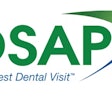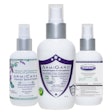
Editor’s note: This is the fourth in a series of articles in which we will bring in an expert to address some of the misinformation we have read in various social media posts and groups. You can see the previous two installments at the bottom of this article.
Q: My co-worker tells me I need different glasses, but I can’t see without my prescription glasses. Can’t I just wear those?
A: Prescription glasses are a great tool to help you see, but they are not protective in the dental setting. Exposure to infectious materials, chemicals, blue light, lasers, and even flying debris put your eyes at risk for injury. With a risk of exposure in almost everything we do as dental professionals, having protective eyewear will keep your peepers healthy and ready to treat patients!
In an article about eyewear use and injury, researchers said that 48% of dental providers self-reported an eye injury or infection while working in the dental setting. An astounding 75% of those reporting injuries and infections self-reported they were not wearing protective eyewear when the injury or exposure occurred.1 Wearing appropriate eyewear for any risk of splash, splatter, or debris can help prevent most injuries.
The U.S. Occupational Safety and Health Administration's (OSHA) 29 CFR 1910.1030, or Bloodborne Pathogens Standard, states, “When there is occupational exposure, the employer shall provide, at no cost to the employee, appropriate personal protective equipment such as, but not limited to, gloves, gowns, laboratory coats, face shields or masks and eye protection …”2
OSHA doesn’t specify what type of eyewear must be worn, but it does say that it should be appropriate for the potential exposure risk in the setting. “Masks in combination with eye protection devices, such as goggles or glasses with solid side shields, or chin-length face shields, shall be worn whenever splashes, spray, spatter, or droplets of blood or other potentially infectious materials may be generated and eye, nose, or mouth contamination can be reasonably anticipated."
Wearing prescription glasses leaves you open to exposure for any of these risks. They are not shatter- or chemical-resistant, and they don’t have solid side shields. The need for prescription glasses can present a challenge when looking for appropriate protective eyewear. Here are some options:
- Prescription safety glasses: There are many companies that will put your prescription into a pair of safety glasses. Some of them are super cute!
- Face shield: Wearing a face shield over your prescription glasses helps keep infectious materials and chemicals from getting in your eye in addition to protecting you from flying debris.
- Goggle-style safety glasses: Goggles that are made to wear over your prescription glasses are available.
- Visual filters: Blue light (curing lights) and lasers can cause major damage to your eyes when they are not protected. The frightening part is that the damage is cumulative. Once they are damaged, your eyes never heal, and repeated exposure -- no matter how small -- can cause permanent damage and vision loss. Protective eyewear for these special situations requires a visual filter. The different types of protection for these situations includes the following:
- Orange-tinted glasses: These glasses cancel the blue color out of the ultraviolet light, still allowing you to see the procedure.
- Orange-tinted paddles: Paddles allow the user to either hold the eye protection in their hand or attach it to the curing light to block the blue light. These are not as effective as the tinted glasses.
- Specialty laser glasses: Laser manufacturers can send approved eyewear with their products that is rated for the specific frequency of the laser light. These glasses should be worn anytime a laser is being used.
Whatever eyewear you choose, make sure they are comfortable and work for you. There is nothing worse than having to wear safety glasses that don’t fit well, fall off, or are uncomfortable. Finding the perfect pair is a great excuse to go shopping as well!
References
- Farrier SL, Farrier JN, Gilmour AS. Eye safety in operative dentistry: A study in general dental practice. Br Dent J. 2006; 200(4): 218-23.
- 1910.1030 - Bloodborne pathogens. U.S. Occupational Health and Safety Administration. https://www.osha.gov/laws-regs/regulations/standardnumber/1910/1910.1030.
Sarah Stream, MPH, CDA, is a seasoned dental professional, educator, and speaker. She is passionate about being a lifelong learner and sharing knowledge with other dental professionals on a safe dental visit and compliance. She currently specializes in OSHA, HIPAA, and infection control, supporting dental facilities with their education and compliance needs. You can contact her at Stream Education and Consulting LLC or via email at [email protected].
The comments and observations expressed herein do not necessarily reflect the opinions of DrBicuspid.com, nor should they be construed as an endorsement or admonishment of any particular idea, vendor, or organization.



















